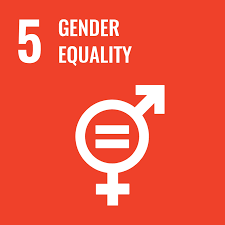Q. “In order to make women’s organization free from gender bias, inclusion of male members needs to be encouraged.” Comment.
Ans: Encouraging the inclusion of male members in women’s organizations is a strategy that can foster greater gender equality, enhance the impact of these organizations, and promote a more inclusive approach to addressing gender-related issues.

Here are some reasons to support this perspective:
- Diverse Perspectives: Involving men in women’s organizations can bring diverse viewpoints to discussions about gender equality. This diversity can lead to more comprehensive and balanced strategies for addressing gender biases and stereotypes.
- Shared Responsibility: Gender equality is a collective responsibility that requires the involvement of all genders. Encouraging men to actively participate in women’s organizations can help challenge traditional gender norms and promote a shared sense of responsibility for achieving equality.
- Engagement of Allies: Men who are supportive of gender equality are valuable allies in the fight against gender bias. Their involvement in women’s organizations can help amplify the voices of women, challenge discriminatory practices, and advocate for policy changes.
- Role Models: Men who actively engage in women’s organizations can serve as role models for other men and young boys. Their presence can help challenge harmful stereotypes and encourage more inclusive behaviors and attitudes.
- Holistic Approach: Many gender-related issues, such as domestic violence, workplace discrimination, and reproductive rights, affect both men and women. Inclusive organizations can address these issues more holistically by involving perspectives from all sides.
- Educational Opportunities: Involving men in women’s organizations can provide educational opportunities to raise awareness about gender-related challenges and the importance of equality. This can lead to a broader societal understanding of these issues.
- Cultural Change: Encouraging men’s participation in women’s organizations can contribute to cultural shifts by challenging the notion that gender equality is solely a women’s issue. This can lead to more supportive and respectful relationships between genders.
- Intersectionality: Gender equality intersects with other forms of discrimination, such as race, sexuality, and class. Including men in women’s organizations can help address these intersections and create more inclusive spaces.
However, it’s important to approach this inclusion thoughtfully and sensitively. Efforts should be made to ensure that men’s participation does not overshadow women’s voices or dilute the focus on women’s issues. Men’s involvement should complement and support the goals of the organization rather than dominate or take over the conversation.
In conclusion, encouraging the inclusion of male members in women’s organizations can contribute to more balanced and effective efforts towards gender equality. This approach recognizes that achieving gender equality requires collaboration and engagement from all genders to challenge stereotypes, dismantle biases, and create a more inclusive society.
Thanks for reading the answer to the question: “In order to make women’s organization free from gender bias, inclusion of male members needs to be encouraged.” Comment.
Read: